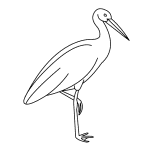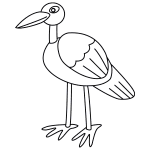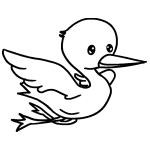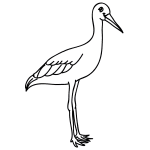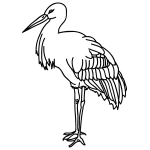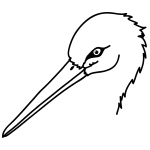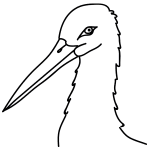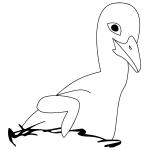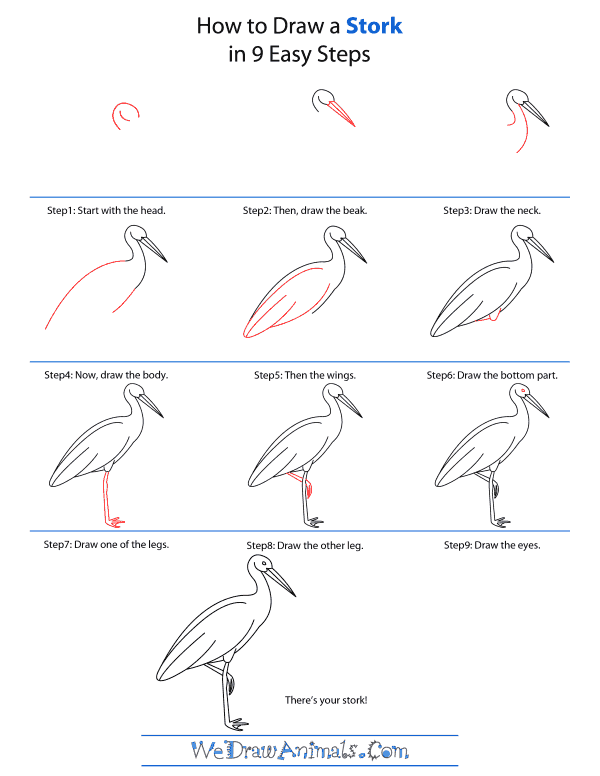In this quick tutorial you'll learn how to draw a Stork in 9 easy steps - great for kids and novice artists.
The images above represent how your finished drawing is going to look and the steps involved.
Below are the individual steps - you can click on each one for a High Resolution printable PDF version.
At the bottom you can read some interesting facts about the Stork.
Make sure you also check out any of the hundreds of drawing tutorials grouped by category.
How to Draw a Stork - Step-by-Step Tutorial
Step 1: Let's start with the head. Draw a curved line like a letter C with another smaller curved line inside of it.
Step 2: Next, draw the beak. Storks have very long and very thin beaks. Draw a triangle with a long line going through the middle.
Step 3: Now draw the neck. Like the beak, the neck is also very long and thin, making the stork look tall.
Step 4: Next is the body. Draw two long, slightly curved lines and leave the bottom part open.
Step 5: Now give your stork a little detail by drawing the wing. The wing is very wide and long and covers most of the body. The stork's wide wings are used to help it soar through the air when it flies to conserve energy. Add two shorter lines near the bottom to separate the different parts of the wing.
Step 6: Then draw the bottom part of the stork. Make a small hump for the beginning of the leg.
Step 7: Draw the first leg. The leg is very long and thin, even thinner than the beak. The stork has webbed toes on its foot.
Step 8: Now curve the other leg around the first one so the stork is standing on one foot!
Step 9: Last, draw a small circle for the eye.
Interesting Facts about Storks
Storks are birds with long legs, long necks, and long beaks. Their feathers are usually white, gray, brown, black, or a combination of these colors. Storks live on every continent except Antarctica. They live near water or in wetlands. There are about 20 species of storks.
Did you know?
- The average lifespan of storks is 20 to 30 years.
- Storks hiss, honk, whistle, croak, and squeal. They can also moo.
- Storks eat clams, mussels, aquatic snails, insects, frogs, and worms.
- The wood stork is the only species in the United States.
- Stork nests can be as large as 6 feet around and as deep as 10 feet. They might use the same nest for years.
- In Dutch and North German cultures, it was once believed that you would have good luck if storks nested on your roof.
- Storks are related to herons, ibises, and spoonbills.
- Storks soar across the sky when they fly, which helps them conserve energy.
Your mom and dad probably told you that storks deliver babies. If you walk around your neighborhood, you might see some signs with cut-out white storks that announce the birth of a baby. The idea that storks deliver newborns to their parents comes from Dutch nursery stories.

